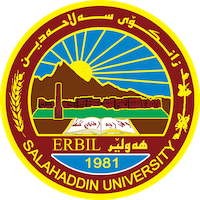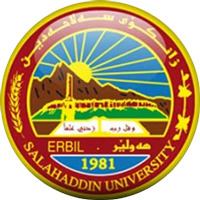Tissue Culture & Cell Biology Lab
Cell Biology is a branch of biology that studies the different structures and functions of the cell and focuses mainly on the idea of the cell as the basic unit of life.
It contains many instruments and equipments:
The important tools such as Flow cytometry (PCA system Guava technologies), Flourscnece microscope (LABomeD) and Nitrogen generator. This lab focuses mostly on chromosomal analysis (chromosomal abbreviation).
Flow cytometry (PCA system Guava technologies)
Flow cytometers are automated instruments that quantitate properties of single cells, one cell at a time. They can measure cell size, cell granularity, the amounts of cell components such as total DNA, newly synthesized DNA, gene expression as the amount messenger RNA for a particular gene, amounts of specific surface receptors, amounts of intracellular proteins, or transient signalling events in living cells. Quantities are usually relative, but can be numbers of molecules per cell when absolute values are needed. Typically, up to three to six properties or components are quantitated in a single sample, cell by cell, for about 10,000 cells, in less than one minute.

General Applications of Flow cytometry
Immunophenotyping
The most common application performed on the cytometer is immunophenotyping. This technique identifies and quantifies populations of cells in a heterogeneous sample - usually blood, bone marrow or lymph.
Cell Sorting
The cell sorter is a specialized flow cytometer with the ability to physically isolate cells of interest into separate collection tubes.
Cell Cycle Analysis
Flow cytometry can analyze replication states using fluorescent dyes to measure the four distinct phases of the cell cycle.
Apoptosis
Apoptosis, or programmed cell death and necrosis, can be distinguished by flow cytometry on the basis of differences in morphological, biochemical and molecular changes occurring in the dying cells.
Cell Proliferation Assays
The flow cytometer can measure proliferation by labeling resting cells with a cell membrane fluorescent dye, carboxyfluorescein succinimidyl ester (CFSE).
Intracellular Calcium Flux
The cytometer can monitor the flux of calcium into the cell and measure the extent to which cells respond to the stimuli.
------------------------------------------------------------------------------------------------------------------------
Flourscnece microscope ( LABomeD )
Fluorescence microscopy is a very powerful analytical tool that combines the magnifying properties of light microscopy with visualization of fluorescence. Fluorescence is a phenomenon that involves absorbance and emission of a small range of light wavelengths by a fluorescent molecule known as a fluorophore. Fluorescence microscopy is accomplished in conjunction with the basic light microscope by the addition of a powerful light source, specialized filters, and a means of fluorescently labeling a sample. 
General Applications of Flourscnece microscope
- Imaging structural components of small specimens, such as cells
- Conducting viability studies on cell populations
- Imaging the genetic material within a cell (DNA and RNA)
- Viewing specific cells within a larger population with techniques such as (Fluorescence in situ hybridization ) FISH.
------------------------------------------------------------------------------------------------
Tissue Culture & Cell lines
Cell culture has become one of the major tools used in the life sciences today. Tissue Culture is the general term for the removal of cells, tissues, or organs from an animal and their subsequent placement into an artificial environment conducive to growth. This environment usually consists of a suitable glass or plastic culture vessel containing a liquid or semisolid medium that supplies the nutrients essential for survival & growth.



CO2-Incubator Laminar Flow Inverted Microscope

